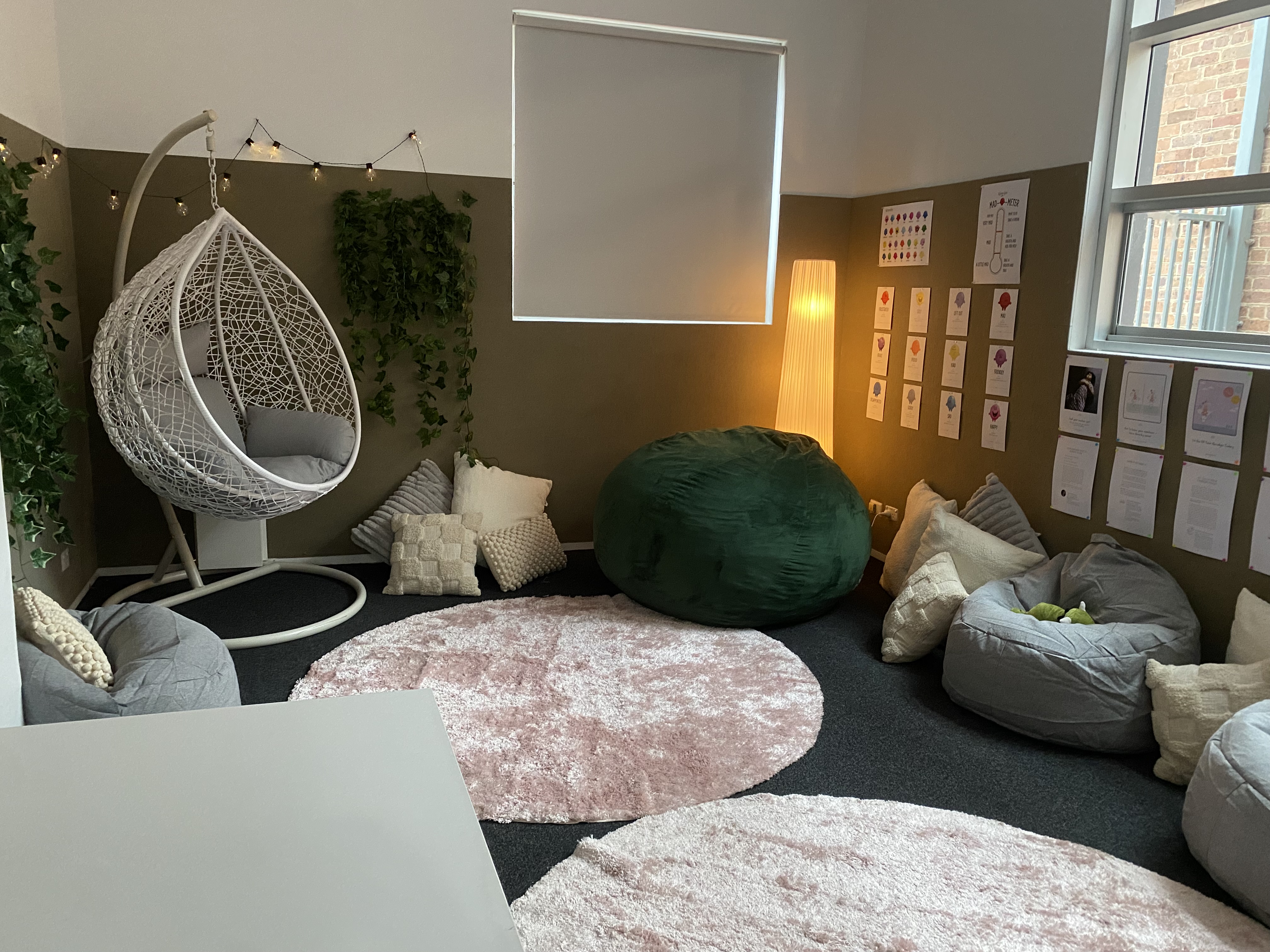Charlotte White, August 2024
A student may start the day with limited energy or focus due to various challenges encountered in the morning. These could include insufficient sleep, minor accidents, conflicts with family members, or stressful commutes that result in arriving late to school. Such experiences can exacerbate a student's anxiety, which may be further heightened by an active, social, and noisy classroom environment.
Similarly, the outdoor playground and yard can be anxiety-inducing for many students. These areas are often chaotic and noisy, which may not support the well-being of either neurotypical or neurodivergent students. The fast-paced social interactions in these spaces can trigger meltdowns, panic attacks, anxiety, or aggressive behaviour in certain students, which can then spill over into the classroom, disrupting the learning environment.
The overall fast pace of school life can also contribute to student anxiety. Uncertainty about upcoming activities or the lack of time to mentally reset between classes can be overwhelming. The challenge of transitioning smoothly between classes may seem insurmountable, further compounding stress.
To address these challenges, it is essential to provide students with a dedicated space where they can calm down, manage their anxiety, and regain a sense of peace before re-entering the classroom. This space can be referred to as a "reset room."
A "reset room" does not need to be large but should be spacious enough to accommodate approximately four students and a supervising adult. The space should feel warm, quiet, and safe, equipped with tools designed to help students reduce anxiety, anger, or feelings of helplessness. It must be a private space where students feel comfortable and free from the fear of stigma or teasing from peers—normalising the use of this room is crucial.
Recommended tools for the “reset room” include comfortable seating options, such as chairs and beanbags, which help students feel protected and at ease. A large, firm beanbag, for instance, is particularly effective for students to stretch out on. Stretching can help divert the mind from stressors, promote the flow of endorphins, and relax the body. This also increases blood flow to the prefrontal cortex, which oxygenates the brain and enhances cognitive functioning (Chang et al., 2017).
Additionally, a vibrating board can positively impact cognition. A student stands on the vibrating board, which sends quick vibrations through the muscles. The vibrations emulate exercises such as walking, jogging, or running, improving executive functioning—a critical aspect of higher-order thinking that enables students to rationalise, solve problems, and make better behavioural choices (Shantakumari & Ahmed, 2023). It also aids in focus and concentration. Balancing on a vibrating board has been shown to significantly improve memory and spatial cognition (2023).
Incorporating a diffuser that dispenses essential oils into the air and mimics the sound of raindrops can assist with anxiety, stress, and relaxation. The sound of water trickling can influence the endocrine and autonomic systems, fostering relaxation (Thoma, 2018). Aromatherapy has similarly been shown in studies to potentially reduce anxiety and stress (Hedigan et al., 2023).
Students on the autism spectrum may have specific sensory needs and benefit from an array of textured cushions. These cushions can assist in reducing meltdowns, inattentiveness, and inappropriate behaviours (Autism CRC, 2024). Using the sense of touch, along with slow breathing, can slow the heart rate, which in turn reduces stress.
The use of low, warm lighting can also help reduce stress by releasing hormones such as cortisol and melatonin, both of which regulate stress levels. Warm lighting contributes to creating a relaxed and cosy environment (Augustin, 2021). Low-wattage warm bulbs in a floor lamp placed in the corner of the room can create a gentle ambience, as can warm fairy lights. If the room has traditional fluorescent school lamps, simple sky coverings can soften the brightness of the cool-coloured bulbs.
Other useful tools for grounding students in the present moment include mindful colouring activities, calming music, and visual stimuli such as bubbles or fish swimming on a screen. Providing colouring sheets, doodling pads, pencils, and devices that can connect to an interactive board is beneficial. For students who need to block out noise due to overstimulation, noise-cancelling headphones are essential.
A simple set of rules should be clearly visible as you enter the “reset room” space. These rules should differ from the typical school or classroom guidelines, avoiding overused language such as the word ‘respect.’ Instead, the focus should be on fostering a sense of peace and calm, with rules that reflect this purpose.
Ultimately, a "reset room" needs to be a welcoming, calming, and safe space. It needs to help students regulate their behaviour so they can re-enter the classroom ready to focus and function effectively in a traditional school environment.
References
Augustin, S. (2021). Designing for well-being: Using psychology to inform designs for the physical environment. Wiley.
Autism CRC. (2024). Sensory interventions for children with autism: A guide for schools. Autism CRC.
Chang, C., Tsai, G., & Hsu, M. (2017). Effects of stretching on anxiety and cognitive function in children: A review of recent research. Journal of Child Psychology, 58(3), 123-134.
Hedigan, N., Clarke, S., & Dooley, L. (2023). The impact of aromatherapy on anxiety in educational settings: A systematic review. Journal of Educational Psychology, 48(2), 234-245.
Shantakumari, N., & Ahmed, F. (2023). Vibrations and cognitive functioning: An exploration of the benefits for school-aged children. Cognitive Development Journal, 39(4), 78-85.
Thoma, M. V. (2018). The effects of nature sounds on stress relief and relaxation: An analysis. International Journal of Environmental Psychology, 54(1), 15-22.
